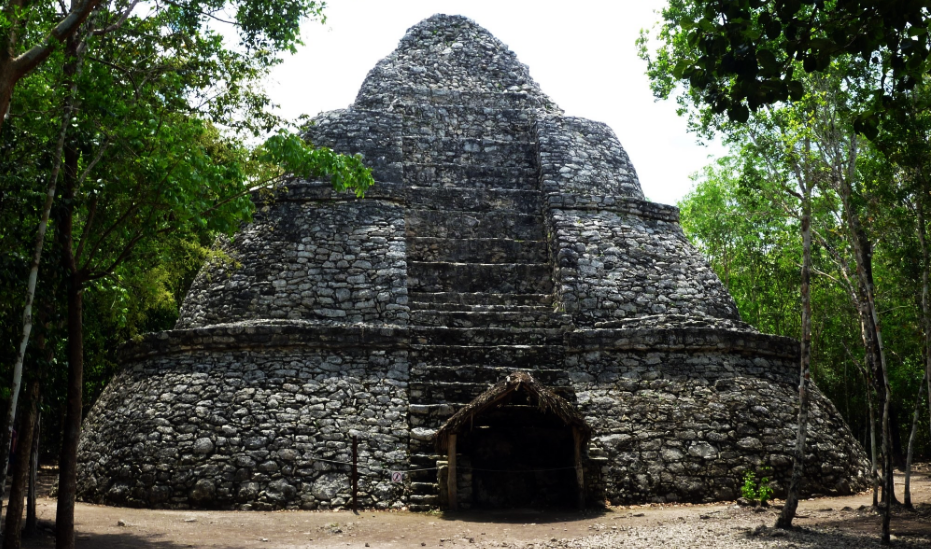Coba means ‘waters stirred by the wind’, an appropriate Mayan name as this settlement is surrounded by two large lagoons. For many years Coba was an ignored piece of Mayan history due to its location. Located between Tulum in the state of Quintana Roo, and Valladolid in the state of Yucatan, archeologists first learned about the site in the mid 1800’s, but dense jungle, the Caste War and lack of funds made this site a difficult area to penetrate. This Mayan site is still largely unexcavated making it a true wonder in the Yucatan. Visitors can enjoy shaded walkways that are the original sacbe (white roads), three settlements that show the architecture and vast area of this once large city, 2 ball courts and climb the highest Mayan pyramid in the Yucatan, Nohoch Mul. We have been visiting Coba since our arrival to the area in the early 90’s and we are still fascinated by this settlement.
Cobá was finally opened to the public as an archeological site in1973. Archeologists have estimated that 6,000 structures exist, but only three settlements are for public viewing. what makes this site different from Chichen Itza, Ek Balam, or even Tulum is that Coba is not a single site but a large group of sites connected to the central pyramid, connected by over 16 Mayan ceremonial “white roads” (sacbéob). The three main areas that can be viewed in the Coba Ruins are the Nohoch Mul structures (main pyramid), Conjunto Pinturas (spiritual area) and Macanxoc structures (close to the lagoon that bears the same name). Your day at Coba can last up to 2.5 hours if you walk the site, 1.5 hours if you take advantage of the Coba bicycle rentals or in an hour if you opt for the Mayan limo, a chauffeured tricycle where you just sit and take in the sights. Both bicycle options are inexpensive and super fun!



